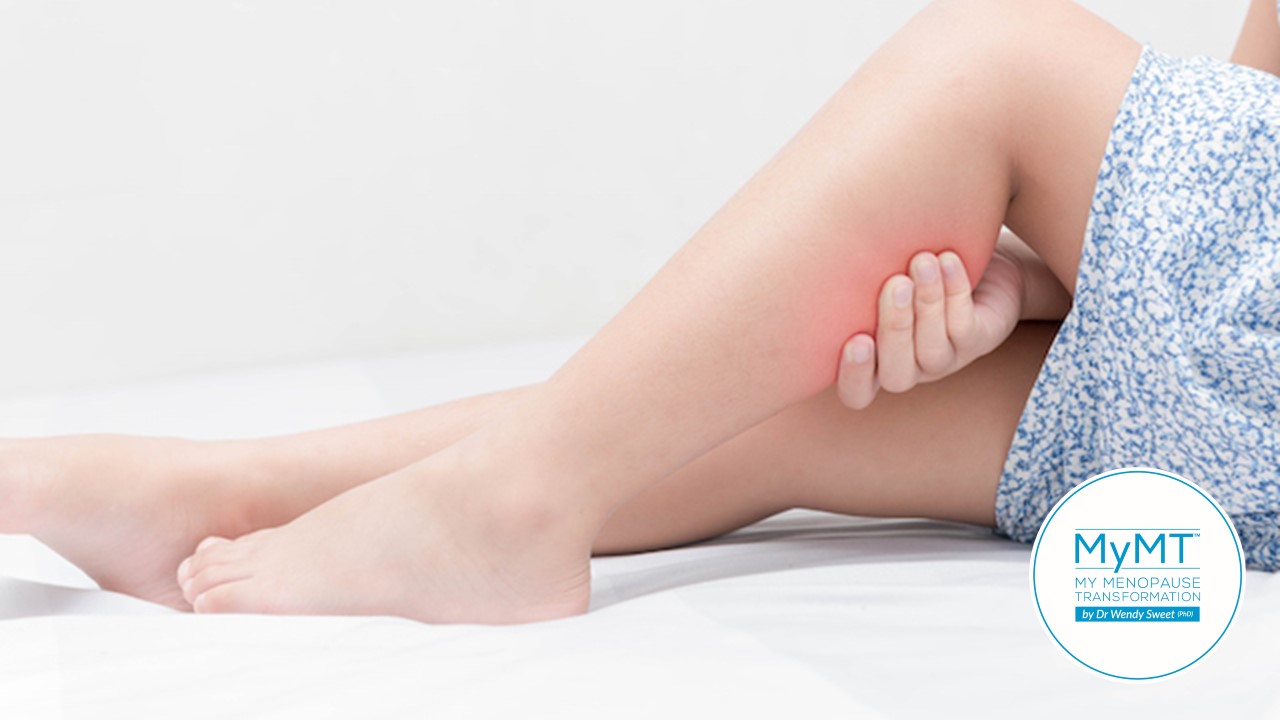I could see her struggling to walk along the hospital corridor. There we were in the Emergency Room unexpectedly – it was busy and there were a few middle-age nurses helping the never-ending stream of patients coming in the door – hubbie included.
Noticing her discomfort and limping movement, I was drawn to look at her ankles. They were swollen. I wondered if she understood how her fluid-balance was affected by both oestrogen and progesterone changes in menopause.
Being on her feet for hours as patients came and went was probably not helping her legs either. Memories of my own swollen, aching calves and feet at the end of the day came flooding back.
When we arrive in mid-life, both oestrogen and progesterone changes have important effects on both body fluid regulation and cardiovascular and lymphatic function. It’s an issue that I was reminded to tell you about as I sat at the hospital over the weekend.
Numerous women end up with tired, swollen legs and ankles, tightness in their breasts and some of you may have also experienced a protruding gut during menopause.
You may not know that these concerns result from the changes that occur to your liver and your lymph vessels as you lose oestrogen with age.
Swelling of tissues can cause many women distress during menopause and any distension or oedema (tissue swelling) must be checked out with your Doctor obviously.
The type of swelling that arrives in mid-life is called Lymphedema and if the swelling occurs in the abdominal cavity, this is called ascites. Both situations require you to see your Doctor, so please do this. There may be an un-natural build-up of tissue fluids because of impaired lymphatic drainage and you might need to see a Lymphatic Drainage Specialist too.
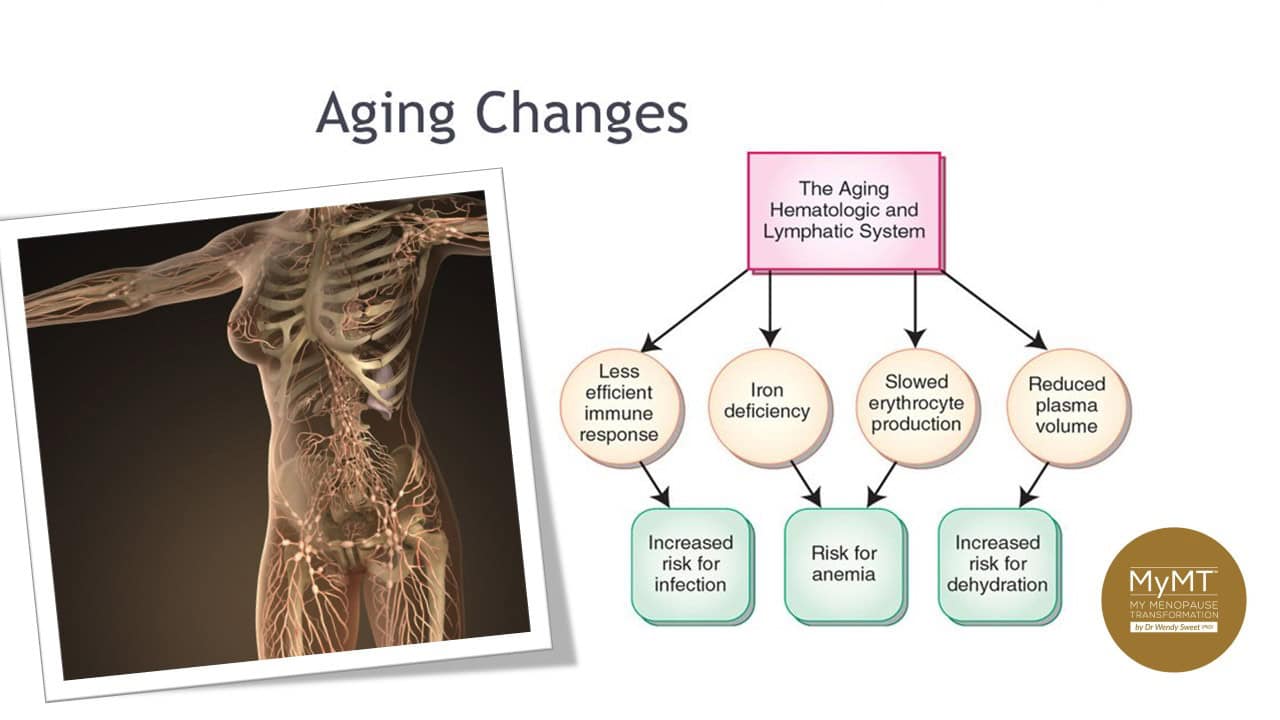
Whilst the effects of fluid regulation in middle-aged and older women are controlled by the kidneys, very few of us realise that oestrogen changes in menopause also cause some sodium retention, which of course, makes us feel a bit swollen and bloated.
Despite all the attention paid to oestrogen changes as we move through menopause, the role that Progesterone plays in fluid retention and fluid balance is equally important.
Progesterone is the primary steroid involved in blood pressure changes around the time of the menopause and is therefore, important for fluid regulation as well. (Stachenfeld, 2014).
But there is another issue too – our lymphatic system is ageing and therefore, losing elasticity as levels of oestrogen and progesterone decline during our menopause transition. In both blood vessels and lymphatic vessels, this is known as ‘vascular stiffness’.
So, when we are sitting or standing a lot or if any of you are taking a long-haul flight, the return of blood back to the heart from our lower extremities isn’t as efficient. We need to help it along otherwise we get swollen ankles or as it’s medically known, oedema.
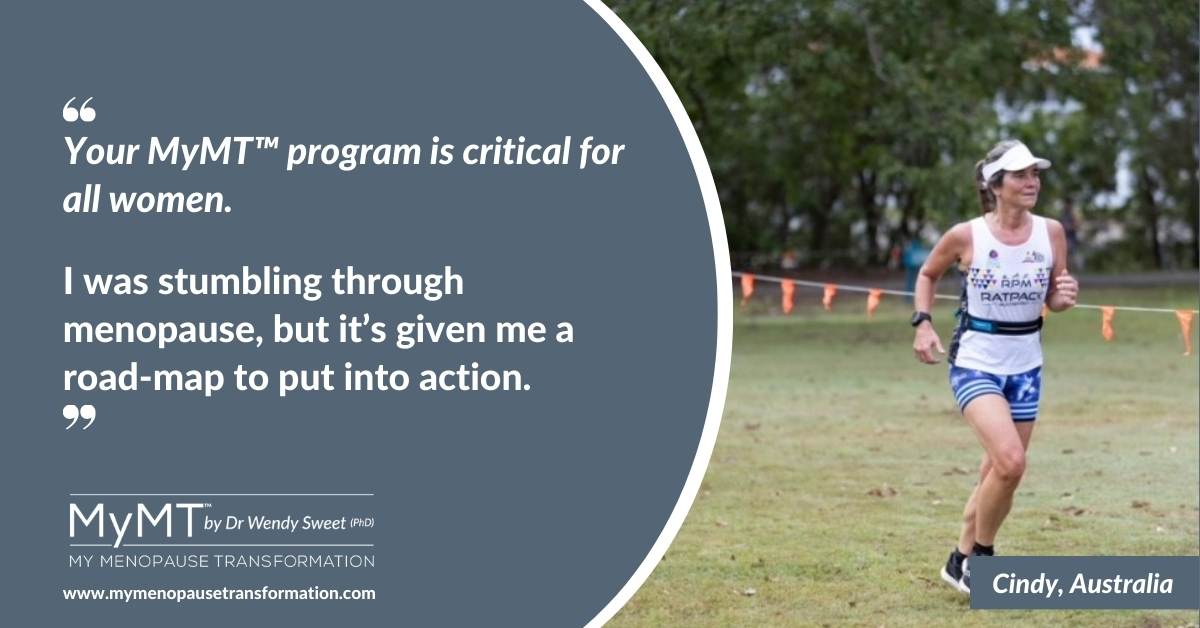
Vascular stiffness contributes to increased fluid retention and risk of blood clots as we move through menopause.
Leg and ankle oedema is a sign of blood pooling in the veins as well as an inefficient lymphatic system. It is a well-known problem among passengers during and after long-haul flights. And I would say, women in menopause who are on their feet for hours on end, such as the hard-working nurses whom I was observing over the weekend.
One of the very few studies in understanding fluid retention in long haul flights and the risk of blood clots was done in 2003 by a group of researchers in America. With more and more people flying for work or recreation, the incidence of a condition called Deep Vein Thrombosis (DVT) had sky-rocketed. In the past few years, interest has focused on a possible causal link between deep venous thrombosis (DVT) and long-haul flights.
Earlier studies (prior to 2000) were mainly done under simulated conditions without the high humidity levels on real flights and without the lower oxygen levels that are present on the air craft as it travels at thousands of metres above earth. Even in these simulated conditions the average fluid accumulation is around 130 mls in the lower leg and ankles after 12 hours of flying.
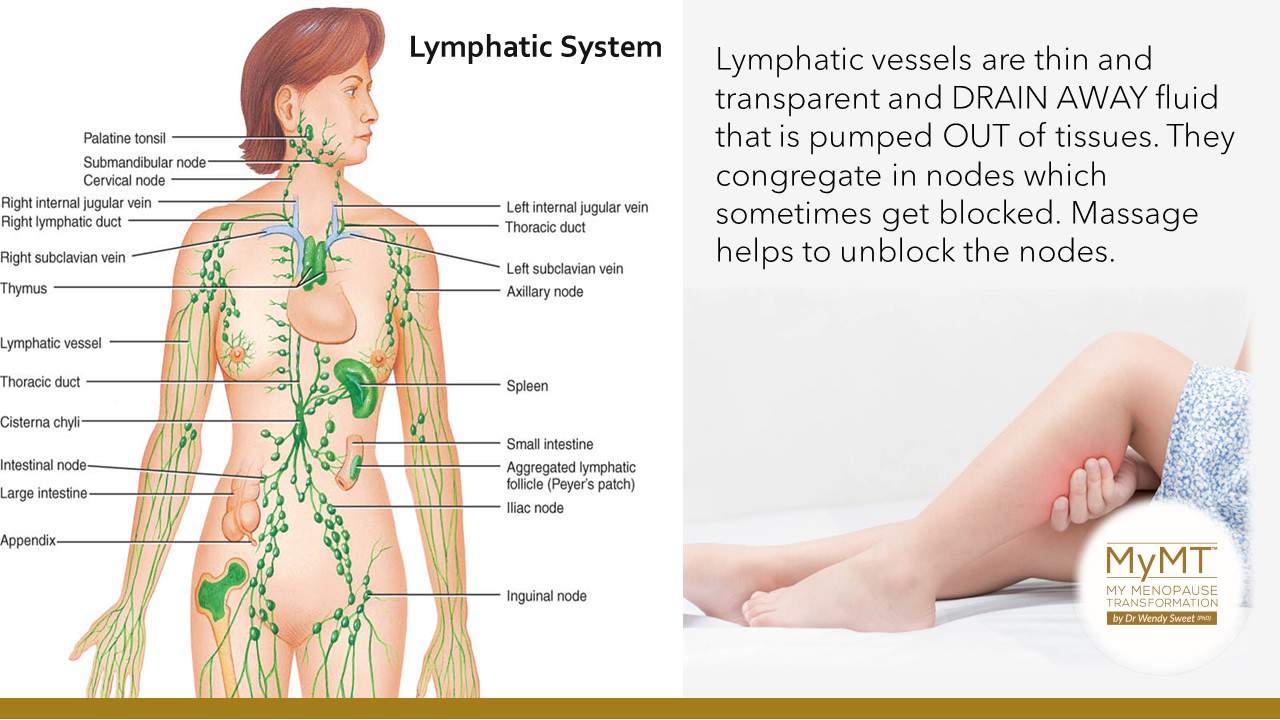
With the variety of measurements that were conducted in the study on flying and fluid retention, the researchers found considerable retention of fluid in lower extremities and the head. They measured skin thickness in the forehead, the tibia (front of shin) and just above the ankle. A number of bloods were taken to look for clotting changes and subjects were allowed to drink 1 glass of alcohol. They ate the meals and drank the water offered with meals.
Not one person showed signs of DVT. But what researchers did find was something more interesting to me and I hope you too, even if you don’t fly much. It’s especially important for those of you who are exercisers as well as those of you who are experiencing swollen ankles during your menopause transition.
Researchers found that all the subjects retained water in the superficial tissues, thus increasing the thickness of the tissue on average 1.5mm. This calculated to fluid retention in each lower leg of about 190mls. That’s a lot of additional fluid that our lymphatic system has to manage.
Over 1/3 of the superficial layer just under your skin consists of water that is continually exchanging in deeper tissues and cells, so this superficial layer was affected the most.
What was most important however was this fluid hung around for several days after the flight. And this increased blood viscosity or thickness (measured as haematocrit). It’s this that promotes blood clotting or thrombosis for at least a week after a long-haul flight.
The recommendation by the researchers is that all travelers on long-haul flights should wear individually adjusted support stockings before and after the flight. I would add to that, if you are standing all day, and you’ve been experiencing swollen ankles and fluid retention, or you are on treatment for breast cancer, then yes, get some support stockings. Especially as you begin to exercise again and stimulate your lymphatic system.
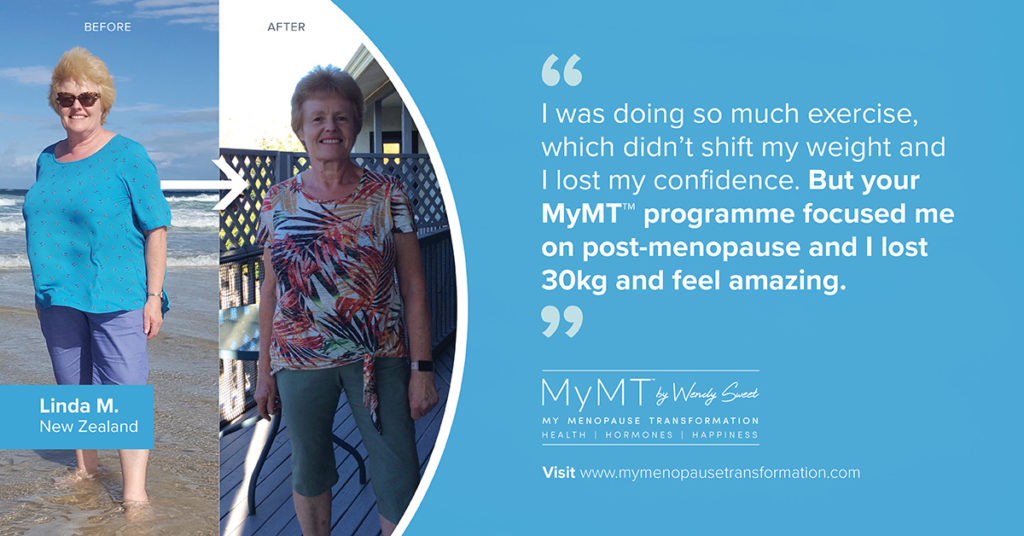
This is also the premise of why you now see athletes wearing support socks when training and competing. They are trying to decrease swelling and inflammation in tissues. But there’s more to this story too. With researchers finding that fluid retention in lower extremities (and the head) stays around for a few days, and risk for clots and blood pooling remaining high, it’s important to shift that fluid and improve blood flow back to the heart.
The main changes that occur in our ageing lymphatic vessels are:
- Loss of around 20% of their contraction strength (just like our blood vessels).
- Around a 70% decrease in contraction frequency.
- Increasing loss of lymphatic muscle cells which is linked to oxidative stress (inflammation). Lymphatic muscle cells are linked to contraction of our muscles and propel lymph through valves to the draining lymph nodes.
- A reduction in the levels of proteins that regulate muscle contraction.
- A thinning of the lymphatic vessel walls.
As such, we need to better manage and help our lymphatic system as we move through menopause. So, here are 3 things you can do:
- Because the lymphatic vessels don’t contract as efficiently as they used to, then having increased plant sources of nitric oxide is important. You can add beetroot (beets) and celery to your diet or juice them instead.
- Learn to breathe better. I talk about breathing in all of the MyMT™ programmes and teach women the best breathing strategy to use to improve tissue oxygenation and to improve our lymphatic system in the programmes.
- Because our lymphatic system works really closely with our nervous system, even a stressful day can affect lymphatic drainage. This is also why improving our breathing helps to stimulate the lymph vessels to do their job of removing inflammatory proteins and dangerous toxins that have myriad deleterious effects around the body.
- Get moving (preferably in the morning). As part of our cardiovascular network, our lymphatic system doesn’t have a pump like the heart does. It relies on movement, massage, muscle contraction and improved breathing to function.
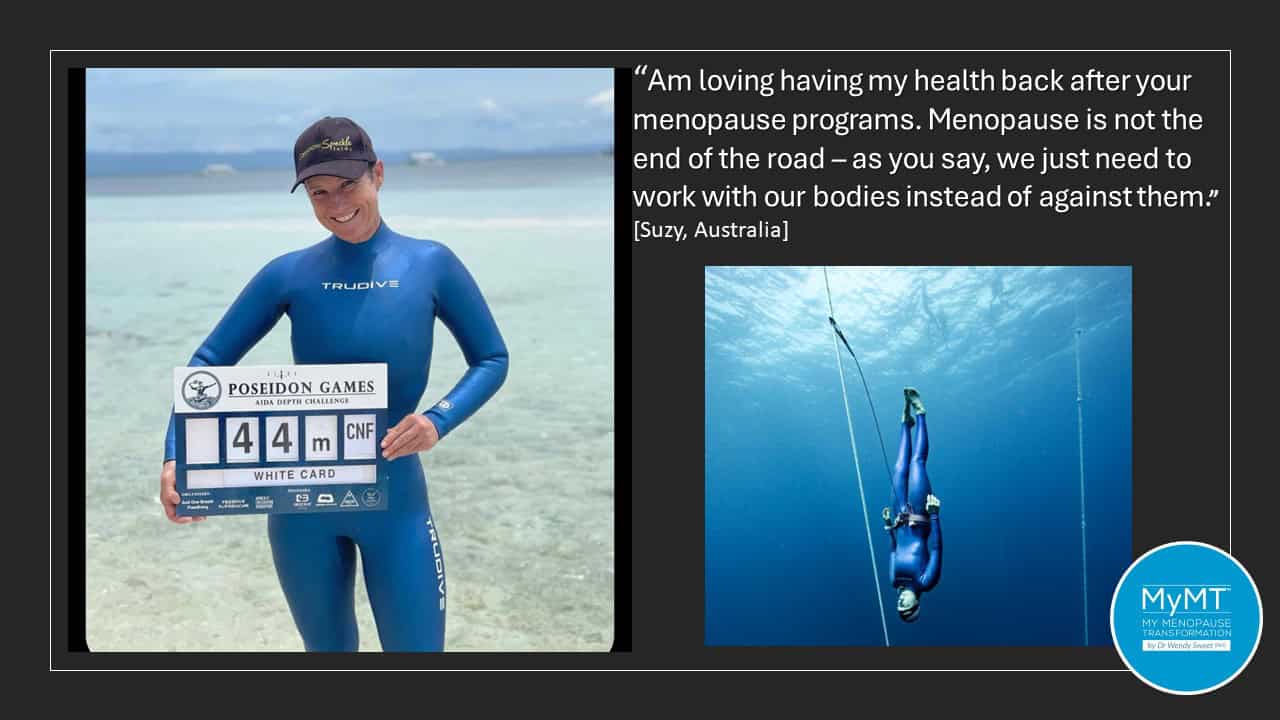
All hormones, nutrients and waste products going to and from the cells deep in our tissues, must pass through the interstitial or extracellular matrix (the areas between the tissues and blood vessels). This depends on a reliable, functioning lymphatic system.
If the lymphatic channels cannot remove toxins properly, no hormone, no gene, no enzyme, and no molecule is going to work optimally, and there will be deposition of waste products into the tissues. This is why many of you begin to feel bloated, experience tissue swelling and cellulite increases as you move through menopause.
When we know that our lymphatic system is so important as we move through menopause, we can drink more water, get our feet up when we can, improve our breathing, wear flight stockings (even at work) and of course, get some massages or do some self-massage.
Then for those of you doing lots of exercise, the same rules apply too. Exercise (especially, resistance training), also puts up your blood pressure and causes interstitial tissue swelling, so if you find that your recovery after exercise isn’t so great, then come on board with me when you can, as you need to know how to improve your recovery after exercise to match your changing blood vessels and ageing lymphatic system during or after menopause.
It would be my privilege to share my knowledge with you when you join me on either of the MyMT™ 12 week online programmes.
Dr Wendy Sweet, PhD/ MyMT™ Founder & Coach/ Member: Australasian Society of Lifestyle Medicine
References:
Inoue, K., Maruoka, H. (2017). Effects of simplified lymph drainage on the
body: in females with menopausal disorder. J. Phys. Ther. Sci. 29: 115–118.
Iwakiri, Y. (2016). The Lymphatic System: a new frontier in hepatology. Hepatology, 64(3), 706-708.
Knight J. & Nigam Y. (2020). The Lymphatic System 1: Structure, Function and Oedema. Nursing Times [online]; 116: 10, 39-43.
Shang T., Liang J., Kapron, C. et al. (2019). Pathophysiology of aged lymphatic vessels. AGING, Vol. 11, No. 16, 1-12.
Stachenfeld N. (2014). Hormonal changes during menopause and the impact on fluid regulation. Reprod Sci. May;21(5), 555-61.
Zolla, I., Nizamutdinova T., Scharf, B. et al. (2015). Aging-related anatomical and biochemical changes in lymphatic collectors impair lymph transport, fluid homeostasis, and pathogen clearance. Aging Cell, 14, 582–594
